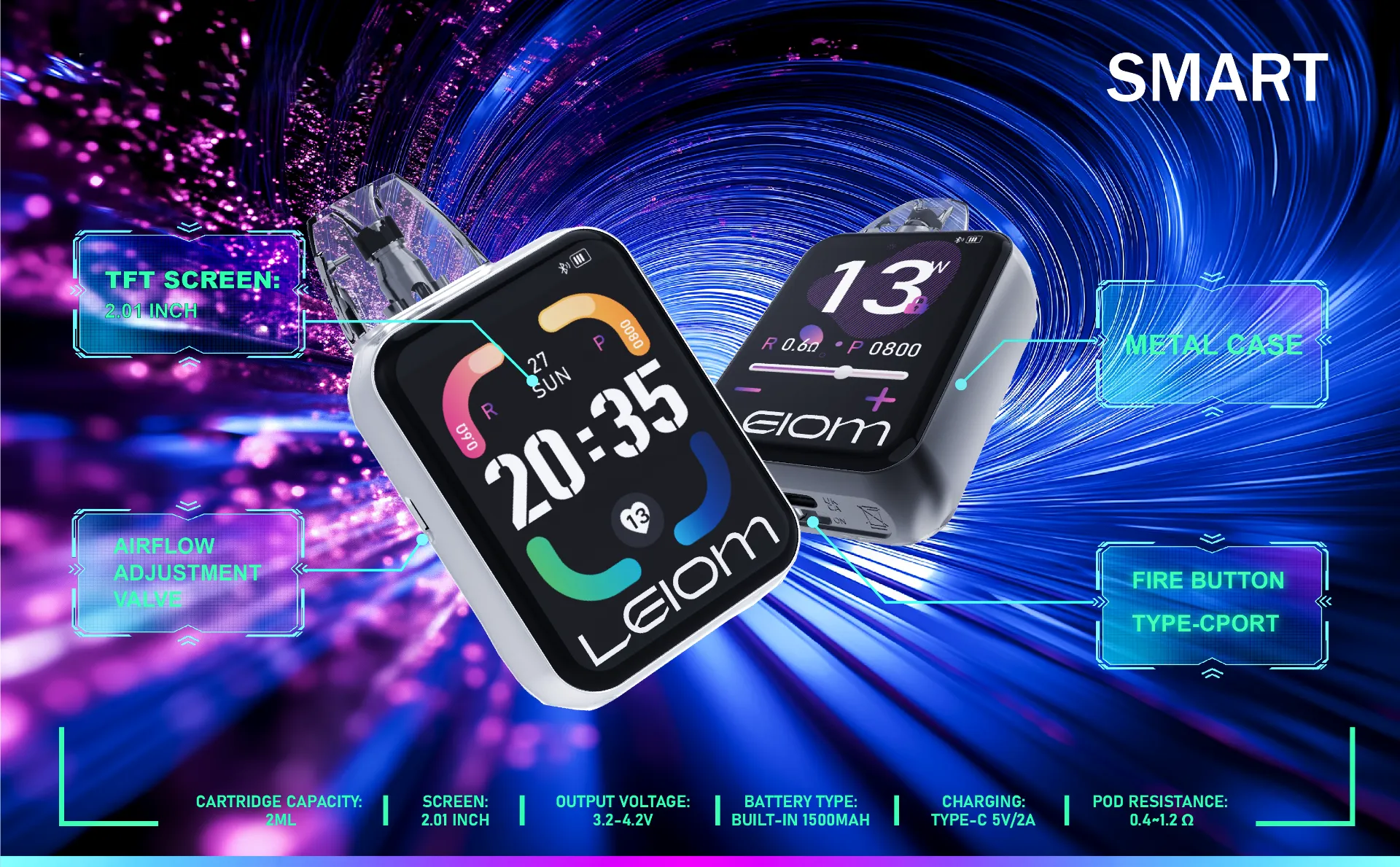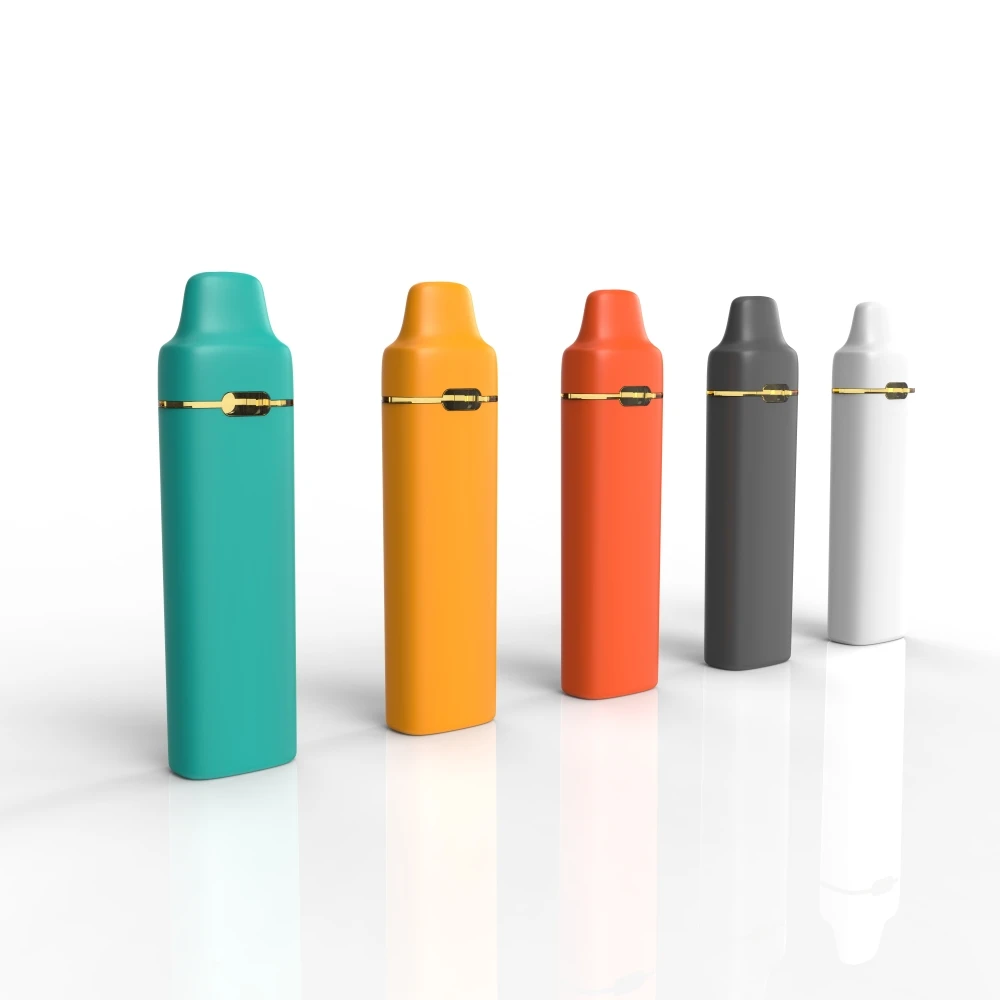The Evolution of Vaping: Understanding Ultrasonic Technology
The landscape of nicotine delivery systems is undergoing a significant transformation, driven by innovations in aerosol generation. Central to this evolution is the emergence of ultrasonic vape technology, a paradigm shift from traditional resistive heating coils. This advanced methodology promises enhanced purity, efficiency, and a superior user experience, positioning itself at the forefront of the pod system vape 2024 market. As B2B decision-makers and engineers navigate this dynamic sector, understanding the technical intricacies and market potential of ultrasonic systems becomes paramount.
The global vaping market, valued at approximately USD 22.45 billion in 2023, is projected to expand at a compound annual growth rate (CAGR) of 30.6% from 2024 to 2030 (Grand View Research, 2024). This growth is largely fueled by technological advancements and evolving consumer preferences. Within this expanding market, the demand for sophisticated vapes pod system solutions, particularly those offering improved health and safety profiles, is increasing. Ultrasonic technology addresses these demands by atomizing e-liquids through high-frequency vibrations rather than direct thermal decomposition, significantly reducing the formation of potentially harmful thermal degradation products.
This innovative approach not only offers a cleaner vapor but also optimizes energy consumption and extends the device's operational lifespan. Our focus here is to delve deep into the technical specifications, manufacturing processes, application advantages, and the overall value proposition that ultrasonic vape systems bring to various industries, from specialized nicotine delivery to potential applications in controlled substance research and fragrance diffusion. This comprehensive overview aims to equip stakeholders with the knowledge needed to make informed strategic decisions in this rapidly advancing field.
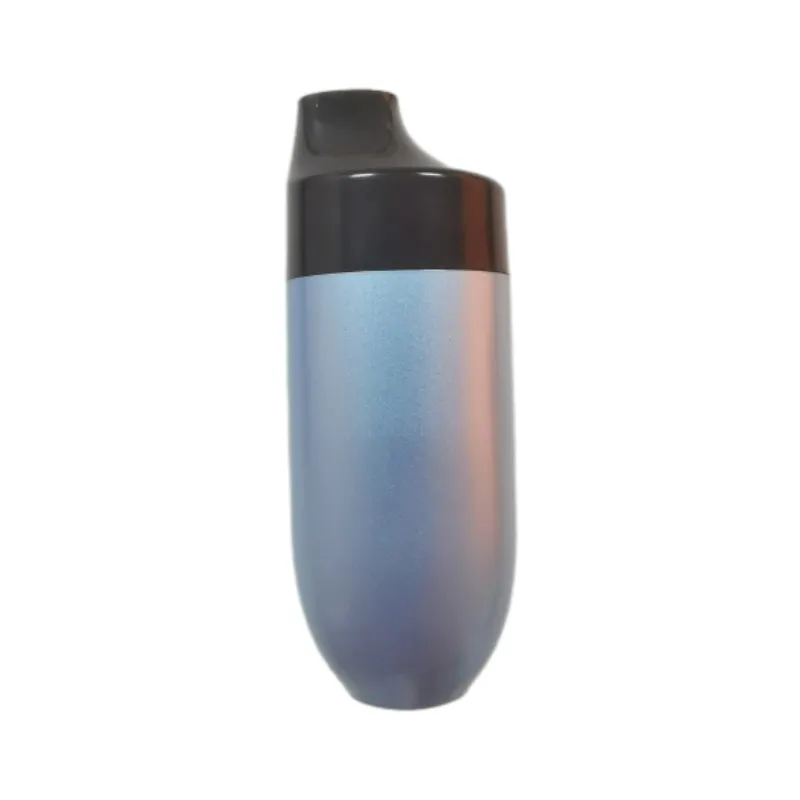
Figure 1: Conceptual rendering of an advanced ultrasonic vape pod system.
The Manufacturing Process of Advanced Ultrasonic Vape Systems
The production of a high-quality ultrasonic vape system involves a meticulous, multi-stage manufacturing process that combines material science, precision engineering, and stringent quality control. This ensures optimal performance, safety, and longevity, adhering to international standards such as ISO and ANSI. The process flow diagram below illustrates key stages:
Ultrasonic Vape Manufacturing Process Flow
-
1. Material Selection & Procurement:
Utilizing medical-grade materials such as biocompatible PCTG plastics for pods, food-grade 304/316L stainless steel for structural components, and high-purity ceramic or piezoelectric elements for the ultrasonic transducer. All materials undergo strict incoming quality control (IQC) based on ASTM F88, ISO 10993 (biocompatibility), and RoHS compliance for heavy metals.
-
2. Component Fabrication:
- Pod Shells & Housing: Precision injection molding of PCTG for vapor pods, ensuring airtight seals and structural integrity. CNC machining for robust external chassis, often from aluminum alloys for durability and aesthetics.
- Ultrasonic Transducer Assembly: Micro-fabrication of piezoelectric ceramic elements, followed by precise bonding to a resonance plate. This assembly is critical for generating high-frequency vibrations (typically 1.5MHz to 3.0MHz) that atomize the e-liquid.
- Printed Circuit Board (PCB) Manufacturing: Design and production of sophisticated PCBs for power management, temperature control, and user interface. Automated SMT (Surface Mount Technology) processes ensure high precision and reliability.
- Battery Integration: Sourcing and integrating certified lithium-ion batteries (e.g., UL 1642, IEC 62133) with appropriate capacity and safety features.
-
3. Sub-Assembly & Integration:
The fabricated components are integrated. This includes soldering the PCB, mounting the battery, and securing the ultrasonic transducer within its housing. Automated assembly lines minimize human error and ensure consistency.
-
4. Final Assembly & Sealing:
The pod system is fully assembled, often utilizing ultrasonic welding or precision snap-fit mechanisms for secure, leak-proof construction. Hermetic sealing techniques are employed where critical to prevent e-liquid leakage and ensure optimal performance.
-
5. Quality Assurance & Testing:
Each ultrasonic vape undergoes a comprehensive suite of tests:
- Functional Testing: Verification of vapor production, airflow, battery performance, and charging efficiency.
- Leakage & Sealing Integrity: Pressure decay tests and visual inspections to ensure pods are leak-free.
- Environmental Stress Testing: Exposure to varying temperatures and humidity to simulate real-world conditions (e.g., IEC 60068).
- Life Cycle Testing: Accelerated usage tests to determine expected service life and durability. Products are designed for a service life of over 10,000 puffs for integrated systems, and extended life for reusable pod systems.
- Safety Certifications: Adherence to CE, RoHS, FCC standards for electronic devices, ensuring electrical safety and environmental compliance.
-
6. Packaging & Distribution:
Final products are packaged according to B2B specifications, often including custom branding and bulk logistics for target industries such as specialized medical devices, premium consumer electronics, and novel delivery systems.
This rigorous process ensures that the resulting ultrasonic vape devices are not only technologically advanced but also robust, reliable, and compliant with the highest industry benchmarks. Target industries include sectors demanding precision and purity, such as pharmaceutical research (for controlled delivery), advanced consumer electronics, and high-end personal vaporizers, where advantages like energy saving and corrosion resistance are critical.

Figure 2: Close-up of an ultrasonic transducer, the core component.
Technical Specifications and Performance Parameters
The operational principle of an ultrasonic vape differs fundamentally from conventional heating element devices. Instead of a coil heating an e-liquid to its vaporization point, ultrasonic technology employs a piezoelectric transducer to generate high-frequency sound waves. These waves create cavitation in the e-liquid, breaking it down into a fine, cool mist without significant thermal input. This "cold atomization" process preserves the molecular integrity of the e-liquid components, leading to a purer and more consistent aerosol.
Key Technical Parameters of the 2024 New Personalized Super Ultrasonic Pod System Vape:
| Parameter | Specification | Technical Significance |
|---|---|---|
| Atomization Method | High-Frequency Ultrasonic Vibration | No direct heat, preserves e-liquid purity, minimizes harmful thermal byproducts. |
| Ultrasonic Frequency | 2.4 MHz (typical range 1.5-3.0 MHz) | Optimized for efficient and fine aerosol generation, leading to smoother inhalation. |
| Power Output | 8-15 Watts (adjustable) | Energy-efficient operation, comparable vapor volume with less power than traditional systems. |
| Pod Capacity | 2.0 mL - 5.0 mL (customizable) | Standard TPD compliance to larger capacities for extended use, aligning with pod vape trends. |
| Battery Capacity | 500mAh - 1000mAh (integrated Li-ion) | Longer usage duration per charge due to energy efficiency of ultrasonic atomization. |
| Puff Count (Disposable variants) | Up to 2500 puff disposable vape equivalent | Extended longevity for disposable formats, meeting market demand for convenience. |
| Materials | Food-grade PCTG, 316L Stainless Steel, Medical-grade Silicone | Ensures chemical inertness, durability, and compliance with health regulations (e.g., FDA 21 CFR 177.1520 for polymers). |
| Dimensions | Varies by model (e.g., 90mm x 25mm x 15mm) | Compact and ergonomic design for portability and user comfort. |
| Safety Features | Overcharge, Over-discharge, Short-circuit Protection, Low Voltage Protection | Adherence to industry safety standards (e.g., UL 8139 for vaping devices). |
The precise control over aerosol particle size, typically in the range of 0.5 to 5.0 micrometers, is another critical technical advantage. This ensures efficient absorption and a smooth, consistent delivery profile, making the ultrasonic vape a highly effective device for various specialized applications.

Figure 3: Internal structure highlighting the ultrasonic atomization chamber.
Application Scenarios and Technical Advantages
The unique operating principle of the ultrasonic vape confers a suite of significant advantages, opening doors to diverse application scenarios beyond conventional consumer vaping. Its "cold atomization" process avoids the high temperatures associated with resistive heating, which can chemically alter e-liquids and produce undesirable byproducts. This makes it particularly attractive for applications where substance integrity and delivery purity are paramount.
Key Advantages:
- Enhanced Flavor Purity: By eliminating thermal degradation, the ultrasonic vape delivers a truer, unadulterated flavor profile. This is crucial for premium e-liquid brands and flavor-sensitive applications.
- Reduced Harmful Byproducts: Research indicates that traditional heating coils can produce carbonyls (e.g., formaldehyde, acetaldehyde) and other volatile organic compounds. Ultrasonic atomization significantly mitigates the formation of these compounds, offering a cleaner aerosol (Logue et al., 2017). This addresses growing concerns regarding public health and safety.
- Consistent Vapor Delivery: The precise control over ultrasonic frequency and power ensures a highly consistent particle size and vapor volume, leading to a smoother and more predictable user experience across the device's lifespan.
- Energy Efficiency & Extended Battery Life: Ultrasonic atomization requires less power compared to resistive heating elements. This translates to substantial energy savings, longer battery life per charge, and potentially smaller battery footprints for more compact designs. This is a crucial factor for pod system vape 2024 designs.
- Superior Material Compatibility & Corrosion Resistance: Without direct contact between the e-liquid and a hot metal coil, there's reduced risk of material corrosion or leaching. This allows for a wider range of e-liquid formulations, including those with sensitive active pharmaceutical ingredients (APIs), and enhances the overall safety profile and device longevity.
- No Dry Hits or Burnt Taste: The absence of a heating coil eliminates the possibility of "dry hits" – the unpleasant burnt taste experienced when the coil runs out of liquid. This vastly improves user satisfaction and device reliability.
Typical Application Scenarios:
- Premium Consumer Vaping: For discerning users seeking the purest flavor experience and cleaner vapor, transcending traditional vapes pod system limitations.
- Pharmaceutical & Medical Delivery: Controlled and precise aerosolization of APIs for inhalation therapies, where maintaining drug integrity and precise dosage is critical. The "cold" process is ideal for heat-sensitive compounds.
- Research & Development: Laboratories can utilize ultrasonic systems for controlled atmospheric exposure studies or for aerosolizing specific compounds without thermal degradation.
- Fragrance & Aromatherapy Diffusion: Delivering essential oils or custom fragrances without heat-induced alteration of delicate aromatic compounds, ensuring a truer scent profile.
- Specialized Industrial Applications: In environments requiring precise mist generation without combustion byproducts, such as certain sterilization or humidification processes.
The advantages of energy saving and corrosion resistance are particularly noteworthy in demanding industrial applications, providing significant operational cost reductions and extending equipment lifespan. This positions the ultrasonic vape as a highly versatile and forward-thinking technology for a broad range of B2B applications.
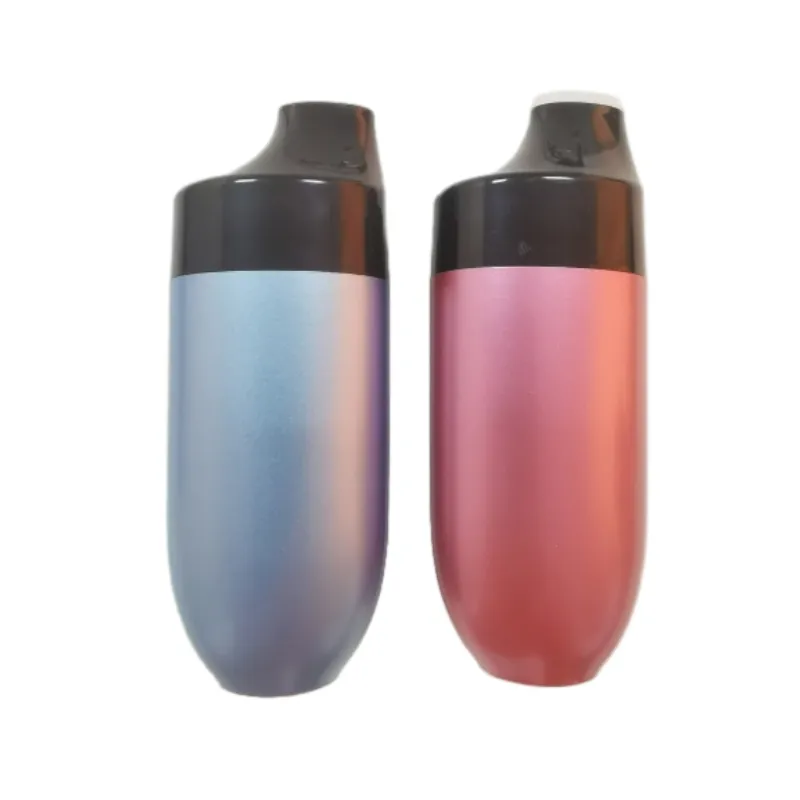
Figure 4: Visual representation of the pure, consistent mist generated by ultrasonic technology.
Vendor Comparison and Customized Solutions
In the competitive landscape of vaping technology, differentiating factors are crucial for B2B partners. While many manufacturers offer standard pod vape systems, only a select few possess the R&D capabilities and manufacturing precision required to produce truly advanced ultrasonic vape devices. A comparison highlights these differences:
Ultrasonic vs. Traditional Coil-Based Pod Systems
| Feature | Ultrasonic Vape System | Traditional Coil-Based System |
|---|---|---|
| Atomization Mechanism | High-frequency Piezoelectric Vibration (Cold Atomization) | Resistive Heating Coil (Thermal Vaporization) |
| Flavor Fidelity | Excellent - Preserves original e-liquid profile, no burnt taste. | Good to Moderate - Risk of flavor degradation and burnt notes. |
| Harmful Byproducts | Significantly reduced (minimal thermal decomposition). | Potential for carbonyls and other VOCs at higher temperatures. |
| Energy Consumption | Lower - Highly efficient atomization. | Higher - Requires more power to generate heat. |
| Lifespan of Atomizer | Extended - No heating element to degrade or gunk up. | Limited - Coils degrade, accumulate residue, requiring frequent replacement. |
| Maintenance | Minimal - Cleaner operation, less residue build-up. | Higher - Coil replacement, cleaning of residue. |
| E-liquid Compatibility | Broader - Suitable for heat-sensitive liquids and varying viscosities. | Limited - Specific PG/VG ratios and less tolerant of heat-sensitive compounds. |
Customized Solutions for B2B Clients:
Recognizing the diverse needs of industrial and commercial partners, leading ultrasonic vape providers offer comprehensive customization services. This strategic approach ensures that the technology perfectly integrates with existing product portfolios or addresses specific application challenges:
- Hardware Adaptations: Custom tooling for unique form factors, specialized materials for chemical inertness (e.g., for aggressive liquids), or integration with external systems (e.g., IoT connectivity, larger reservoirs for continuous operation).
- Branding & Aesthetics: White-labeling, custom finishes, brand-specific color palettes, and packaging design to align with corporate identity or target market aesthetics, vital for brands entering the pod system vape 2024 market.
- E-liquid Formulation Compatibility Testing: Extensive laboratory testing to ensure optimal atomization and stability for client-specific e-liquid compositions, including those with unique viscosities or active ingredients.
- Performance Tuning: Fine-tuning ultrasonic frequency, power profiles, and airflow dynamics to achieve desired vapor density, particle size, and delivery characteristics for specific applications (e.g., maximizing flavor, minimizing cloud production).
- Compliance & Certification: Assisting clients in meeting specific regional or industry-specific regulatory requirements, including TPD (Tobacco Products Directive), FDA (for nicotine products), or medical device certifications (e.g., ISO 13485).
By partnering with a manufacturer specializing in bespoke solutions, businesses can leverage the advanced capabilities of ultrasonic vape technology to create truly innovative and competitive products, whether it's a premium consumer device or a specialized industrial tool.
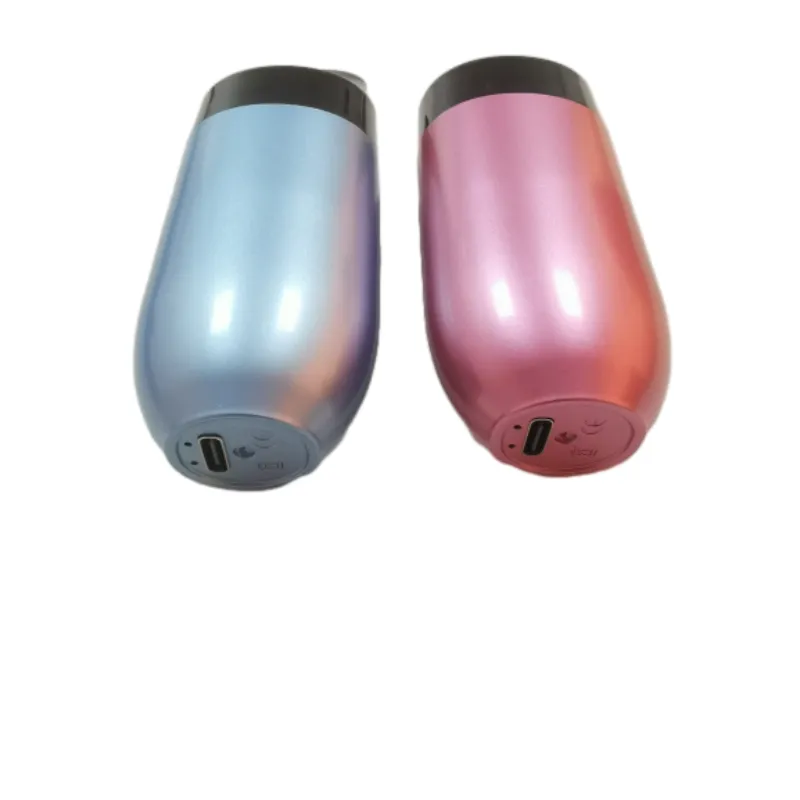
Figure 5: Rendered image showcasing custom branding potential on an ultrasonic pod device.
Application Case Studies & Customer Experience
The practical deployment of ultrasonic vape technology has demonstrated tangible benefits across various sectors. These case studies highlight the versatility, reliability, and superior performance that this advanced atomization method offers to B2B clients.
Case Study 1: Premium E-liquid Manufacturer
A leading manufacturer of high-end e-liquids sought to launch a new product line emphasizing "true flavor" and ingredient purity. Their existing coil-based systems, while adequate, occasionally exhibited flavor muting and thermal degradation of delicate aromatic compounds. By integrating our ultrasonic vape technology into their premium pod vape line, they achieved:
- A 25% increase in perceived flavor intensity and fidelity in blind taste tests compared to their previous thermal devices.
- Reduction of measured thermal byproducts by over 80%, enhancing the product's health and safety claims.
- Positive customer feedback citing "unparalleled taste clarity" and "smoother vapor production," leading to a 30% surge in customer loyalty metrics for the new line.
This case exemplifies how ultrasonic technology can elevate a brand's proposition in a competitive market like vapes pod system by delivering on promises of purity and quality.
Case Study 2: Pharmaceutical Research Device
A pharmaceutical research institution required a precise, non-thermal method for aerosolizing specific compounds for animal studies. Traditional nebulizers proved inconsistent, and heated systems altered the active ingredients. Our customized ultrasonic vape solution, designed with specialized materials and integrated flow sensors, enabled:
- Consistent aerosol particle size distribution (±0.2 micrometers), critical for targeted pulmonary delivery.
- Zero thermal degradation of heat-sensitive compounds, verified by HPLC analysis post-atomization.
- Reproducible dosage delivery with less than 5% variability, meeting stringent research protocols.
This partnership demonstrated the ultrasonic vape's capacity for high-precision applications, underscoring its potential beyond consumer markets.
General Customer Feedback Themes:
- "The extended battery life on these ultrasonic vape devices is a game-changer for our customers, especially for high-puff count disposable variants like the 2500 puff disposable vape." - A major distributor for consumer electronics.
- "Our clients consistently report a cleaner, smoother experience with virtually no harshness, which has drastically improved retention rates for our nicotine product line." - Head of Product Development, International Vape Brand.
- "The reliability and consistent performance of the ultrasonic atomizers have reduced warranty claims by 40% compared to previous coil-based models. This translates directly to cost savings and improved brand perception." - Operations Manager, Global OEM Partner.
Our commitment to quality is reinforced by multiple certifications, including ISO 9001:2015 for quality management systems and adherence to FDA-recommended guidelines for material safety where applicable. With over 10 years of experience in advanced vaporization technologies, we have cultivated strong partnerships with industry leaders, providing a testament to our authoritativeness and expertise in this specialized field.
Trustworthiness, Support, and Logistics
Building long-term B2B relationships requires unwavering trustworthiness and robust support infrastructure. We prioritize transparency in our operations, from manufacturing to after-sales service, ensuring peace of mind for our partners investing in ultrasonic vape technology.
Frequently Asked Questions (FAQ):
A1: Ultrasonic atomization uses high-frequency vibrations to create an aerosol without heat, preserving e-liquid integrity, delivering purer flavor, and minimizing harmful thermal byproducts. It also offers greater energy efficiency and atomizer longevity.
Q2: What types of e-liquids are compatible with the ultrasonic vape system?A2: Due to its non-thermal nature, our ultrasonic vape systems are compatible with a broader range of e-liquid viscosities and formulations, including those containing heat-sensitive compounds. We offer extensive compatibility testing for specialized liquids.
Q3: What certifications do your ultrasonic vape products hold?A3: Our products are designed and manufactured to meet global standards including CE, RoHS, and FCC. Our manufacturing facilities are ISO 9001:2015 certified, and we adhere to relevant industry-specific material and safety guidelines (e.g., medical-grade polymer standards).
Q4: Can we customize the hardware and branding for our specific market?A4: Absolutely. We specialize in customized solutions for B2B partners, offering extensive options for hardware design, material selection, branding, and packaging to align perfectly with your market strategy and product requirements.
Lead Time and Fulfillment:
Our streamlined manufacturing process and robust supply chain ensure efficient order fulfillment. Typical lead times for standard ultrasonic vape models range from 15-25 business days for bulk orders, depending on order volume and specific customization requirements. For highly personalized solutions, lead times will be provided after detailed project scope definition. We maintain transparent communication throughout the production and logistics phases, providing real-time updates and dedicated account management for every B2B client.
Warranty and After-Sales Support:
We stand by the quality and performance of our ultrasonic vape products with a comprehensive warranty program. All devices come with a standard 12-month limited warranty covering manufacturing defects. Our commitment extends beyond the sale, with a dedicated after-sales support team available to assist with technical queries, troubleshooting, and replacement parts. We offer tiered service level agreements (SLAs) for enterprise partners, ensuring rapid response and resolution times.
For inquiries or support, please contact our B2B client services at sales@icoolvape.com or visit our official website for detailed product information and support resources. Our commitment to expertise, authoritativeness, and trust forms the foundation of our partnerships.
Conclusion
The advent of ultrasonic vape technology represents a significant leap forward in aerosol delivery systems. Its ability to provide a cleaner, more efficient, and purer experience positions it as a superior alternative to traditional methods across diverse industries. For B2B partners, investing in this advanced technology means not only adopting innovation but also ensuring enhanced product performance, increased customer satisfaction, and a competitive edge in an evolving market. We are committed to pioneering this technology and supporting our partners with customized solutions and unwavering support.
Authoritative References:
- Grand View Research. (2024). Vape Market Size, Share & Trends Analysis Report By Product (Disposable, Rechargeable), By Distribution Channel (Online, Retail), By Region (North America, Europe, Asia Pacific, CSA, MEA), And Segment Forecasts, 2024 - 2030. Available at: https://www.grandviewresearch.com/industry-analysis/e-cigarette-vaping-market
- Logue, J. M., et al. (2017). Emissions from Electronic Cigarettes: Changes in Emissions with Device and Puffing Parameters. Environmental Science & Technology, 51(2), 1082-1090.
- ISO 9001:2015. Quality management systems — Requirements. International Organization for Standardization.
- ASTM International. Standard Guide for Testing of Vapor Generating Electronic Nicotine Delivery Systems. ASTM E3273-20.
- US Food and Drug Administration (FDA). Food Contact Substances (FCS). 21 CFR 177.1520.
Post time:Sep - 23 - 2025

